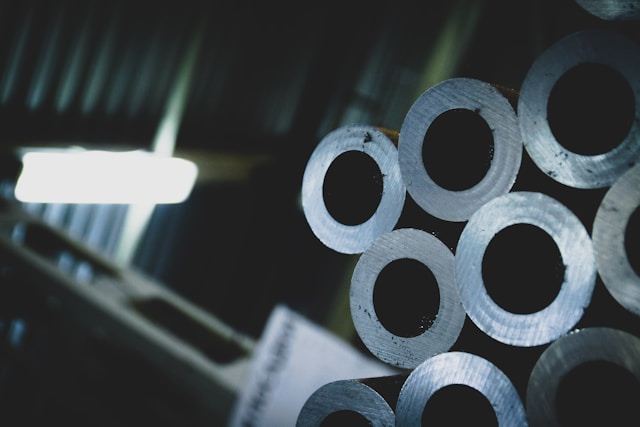Metalworking is a range of techniques focused on making changes in the shape of metal as well as the chemical and physical properties for practical use. Have you ever heard what metal processing is? The metal processing process is roughly divided into three categories: metal forming, metal cutting and metal joining process. This article serves to provide more information on metal cutting.
What is Metalworking?
Metalworking has its roots in antiquity; it transcends cultures, civilisations and millennia and ultimately, the beginning of metalworking was to mould soft native metals like gold using basic hand tools chiefly for ornaments. It developed into techniques for melting ores and heat forge harder metals such as iron, and up to very sophisticated modern procedures such as machining and welding. This was the time when people started to use various metals in producing weapons and other regular uses.
Technology has advanced a great deal over the years. Today, there are dozens of methods of accurately processing metals to get the desired result.
Metalworking Processes & Technology
Metalwork includes different processes of shaping and handling metals that manufacture finished products or components. Here are some common metalworking processes and technologies:
Metal Marker
Direct Part Marking is a family of metal marking technologies to allow part traceability, industrial part labelling, decoration or any other reason permanently.
Metal Engraving
Engraving is a type of technology which is mainly employed in engraving patterns, characters, pictures or codes on metal surfaces for obtaining products which are permanently marked, or to print engravings on paper with engraved metals. Engraving typically employs two technical approaches laser and mechanical engraving.
Metal Stamping
Metal stamping is not a subtractive machining process. This is the process of folding metal sheets into different forms using moulds. All the household utensils we use daily, like pans, spoons, cooking pots, and plates are marked with the stamp.
Metal Etching
Photochemical or laser processes can result in etching. The current preferred method is laser etching. This technology has been improving tremendously with time. It means precise etching on metal using a coherently amplified light beam.
Chemical Etching
Chemical etching is the method of placing a portion of a metal plate in an acid (or etchant) that effectively cuts through and leaves the desired shape in the resulting grooves (or cutouts) of the metal. It is in essence a subtractive process that uses etchant chemistry to manufacture complex and accurate metal parts.
Photolithography
Photolithography is a photographic method of producing acid-resistant layers on metal surfaces. One of the main differences between this method and motorized or manual scraping techniques in pre-chemical etching is that the irradiated applied acid-resistant layer is just causing a photoresist layer or photoresist layer, a process that allows the production of highly precise and reproducible patterns.
Metal Grinding
Grinding refers to the physical grinding of workpieces using cutting tools (abrasives) such as to smooth rough edges, deburr, grind welds, remove chips, create sharp edges, or give metal parts a unique appearance. Usually, grinding is used as a final operation after a part has been engraved, stamped, etched, or any other form of metalworking.
Metal Milling
Metal milling is the machining procedure of removing material from the surface of a metal to achieve its final shape. The milling machine is a device made of a milling cutter rotating about a spindle and a table that can move in various directions to the work surface.
Recommended Tools for Metalworking
The choice of appropriate tools for metalworking is based on several factors. In galvanising plants or factories producing car parts, other tools will be required in steel mills. They are advanced tools that provide very good heat and chemical heat treatment as well as mechanical treatment of metals. Industrial equipment includes, among others:
- metallurgical furnaces,
- melting crucibles,
- galvanic baths,
- The CNC machines include milling machines, lathes, punching machines, and welding machines
- lasers
- hammers and rolling mills
- steam boilers
In workshops and for private use, power tools for manual cold processing of metals are used, such as:
- bending machines,
- shrinking/stretching jaws,
- grooving machines,
- cutters,
- wheeling machines,
- hole saws.
Metals are joined through the usage of handheld welding machines (MIG/MAG, MMA, TIG) and riveting machines. Cutting is done using plasma cutters, angle grinders, circular saws and mitre saws. They can be used for any kind of metal sheet.
However, the most effective tool in the process of cutting aluminium, which is not an easy task at home, is a jigsaw. In industry, a narrow jet of water is used for this purpose.
Final Thoughts
Civilisation as we know it today would not have existed without metalworking. The reason why metal elements are often used is their ductile nature, endless forms they can get, and durability and resistance to external influences. It is also an electric conductivity, which is essential in the production and development of electronics.
Due to the above, many metal processing techniques have been formulated. We encounter some of them every day, such as considering which air impact wrench or grinding machine to buy. Other devices are used at the same time in production plants with advanced technological processes such as electron beam welding or laser metal processing.
